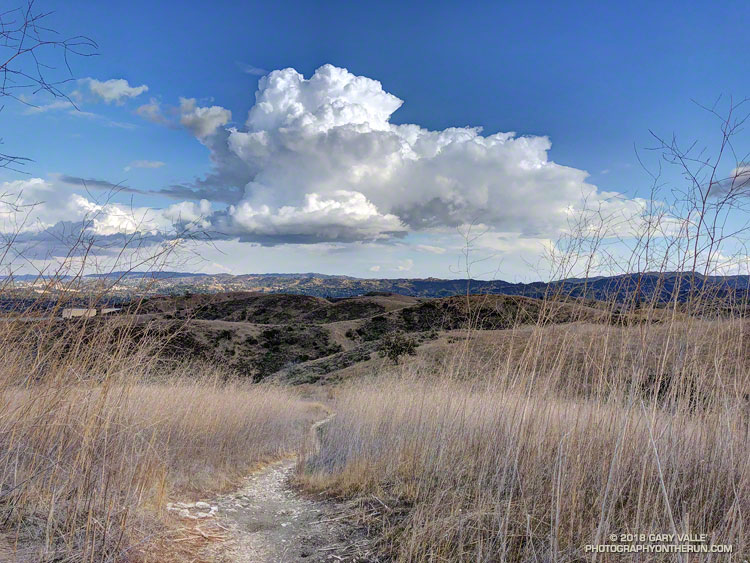
Chasing a cumulus cloud on a trail run in El Escorpion Park.

Chasing a cumulus cloud on a trail run in El Escorpion Park.
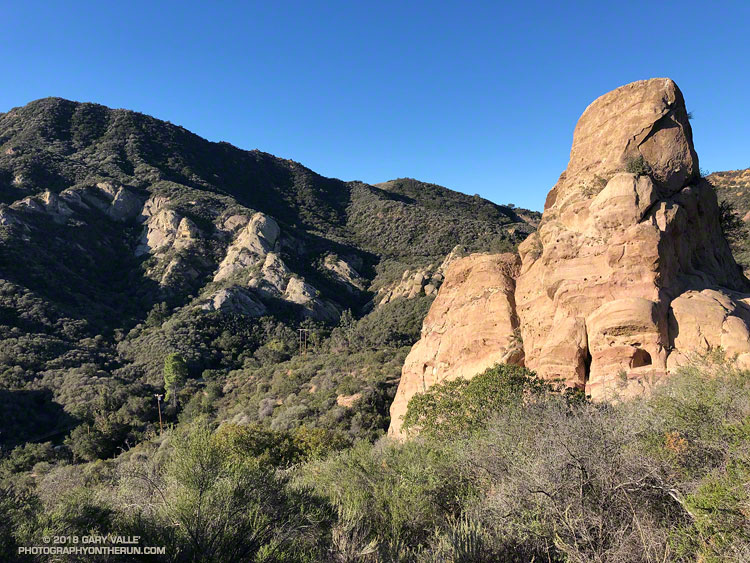
Nope, I wasn’t running near Las Vegas or north of Mojave, this Red Rock Canyon is in Old Topanga Canyon, southeast of Calabasas Peak.
Although there’s a trailhead off of Old Topanga Canyon Road, I usually access Red Rock Canyon from the top, using Calabasas Peak Mtwy and Red Rock Road.
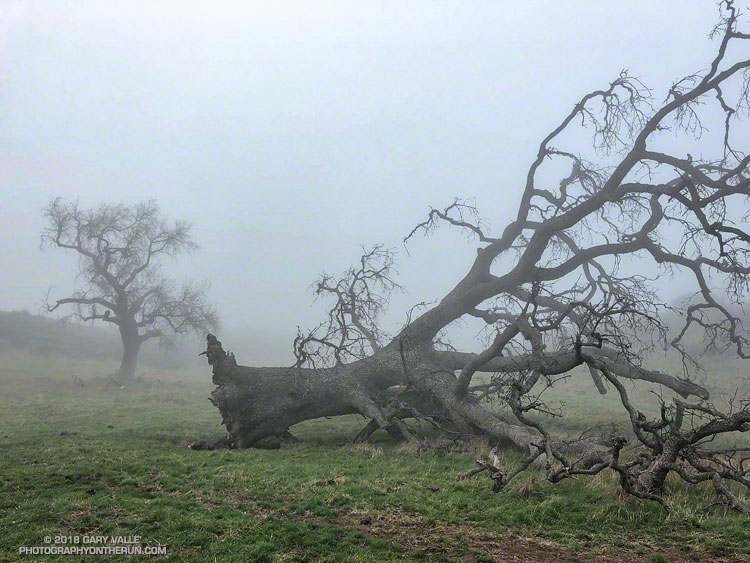
The fallen oak pictured above — one of the larger valley oaks along Rocky Peak fire road — toppled over in the summer of 2016 following five years of drought. Fire and drought are a natural part of the valley oak’s habitat and the trees have evolved to withstand ordinary variations in their environment. However, severe fires or extended droughts, or fire in combination with drought can overcome the tree’s defenses. The drought may have been the culminating factor in the felling of this oak, but fire and other factors may have also played a role.
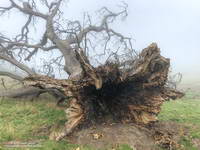
According to the Fire Effects Information System (FEIS), the heart-rot fungus Armillaria mellea is usually present in valley oaks and larger oaks tend to be hollow or rotten in the center. The toppled oak was hollow near its base and its interior appears to have been blackened by fire. The FEIS describes instances where the decaying wood in the interior of older valley oaks could ignite in a fire, but leave the exterior bark uncharred.
What fire might have burned the tree? There are two possibilities: the 2008 Sesnon Fire and the 2003 Simi Fire. It probably wasn’t the Sesnon Fire — this photo of the tree, taken about a month after the Sesnon fire, shows little impact. I couldn’t find a photo of the tree following the Simi Fire, but photos taken nearby show a severely burned landscape. Ultimately, it appears fire and drought weakened the tree, accelerating its heart rot and weakening its roots to the point it could no longer support itself.
Photos of the fallen oak are from this morning’s foggy run along Rocky Peak fire road.
Related post: Ahmanson Blue Oak Succumbs to Climate Change, Chumash Trail – Sesnon & Simi Fires
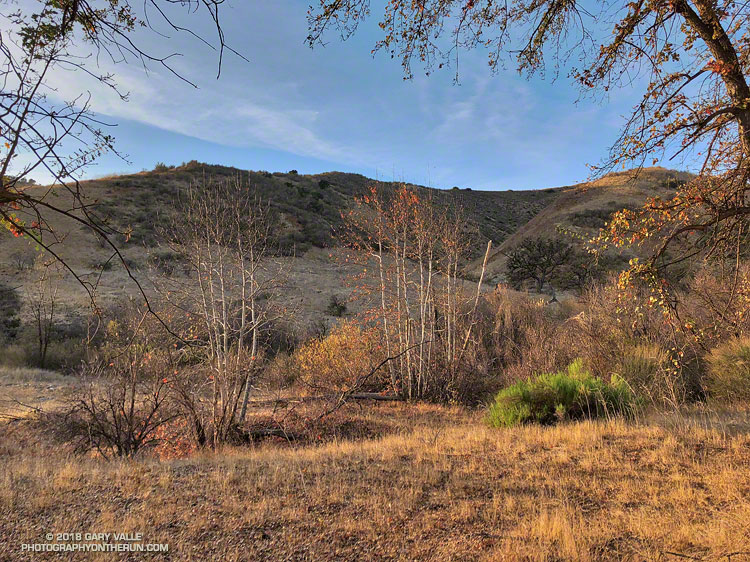
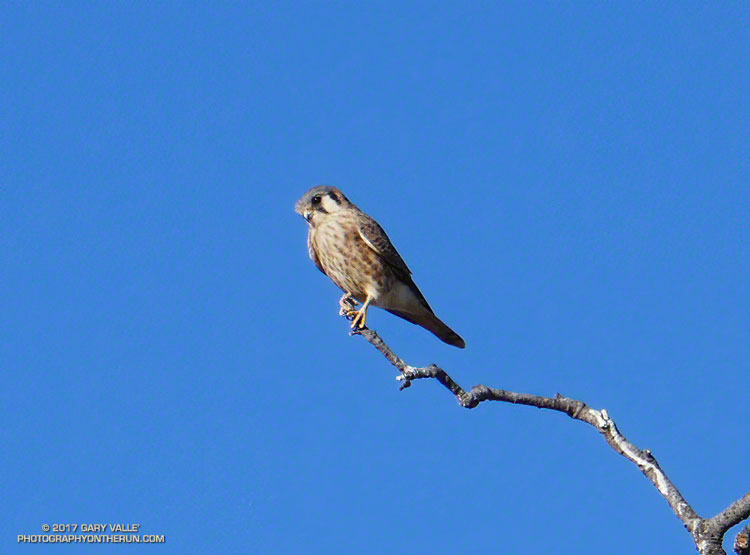
I was in that other-world you can reach when running, lost in thought and dreaming of dreams. As I approached the valley oak on the western edge of Lasky Mesa, I wondered if the tree was going to survive. Even though last Winter had been wet, it had been a hot summer, and this once-elegant star of TV and film was still struggling with the deleterious effects of five years of drought. Leaves grew in clusters along its spindly limbs as if it had been burned in a wildfire.
Nearly under the scraggly valley oak, I slowed to a walk to look at it more closely. Glancing upward I did a double-take… Perched on a bare limb at the top of the tree was a small raptor. So small, that it had to be an American kestrel.
Kestrels are extremely wary birds with acute vision, and I was surprised it had not flown as I had run toward the tree. I’ve seen and heard kestrels many times at Ahmanson Ranch, but never this closely. The diminutive falcon was only about 15′ above me. My camera was in my pack and just about any movement was going to spook the bird.
Ever so slowly, I turned my back to the bird and walked a few steps away from the tree. Wishing I had eyes in the back of my head, I carefully removed my camera from my waist pack, turned it on, made sure it was set correctly, and partially extended the zoom lens. Turning back toward the tree, I expected the falcon to be gone, but it had not flown.
I took a set of bracketed photos and then another. I needed to be a little closer. I took two or three slow steps toward the tree. As I raised the camera, the female kestrel — burnt orange across the back and upper wings — had had enough. With a powerful stroke of her wings she turned and leapt to flight, once again leaving me to my thoughts.
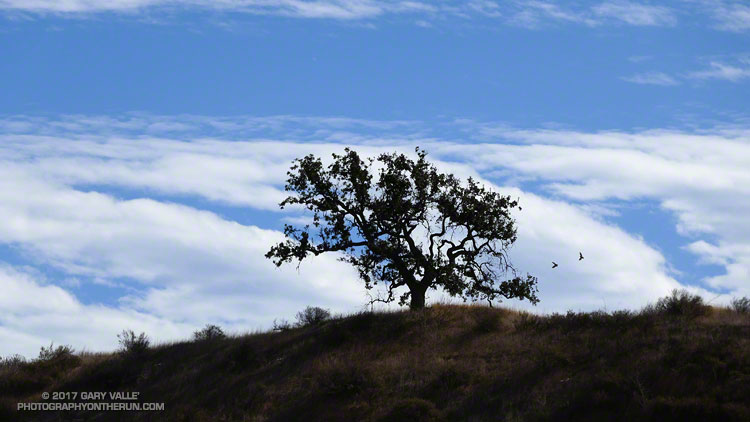
From this afternoon’s run at Ahmanson Ranch.